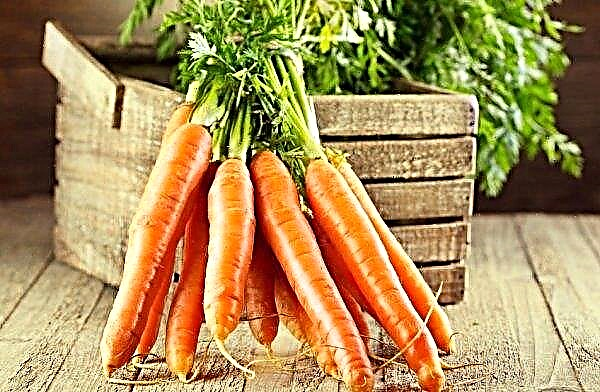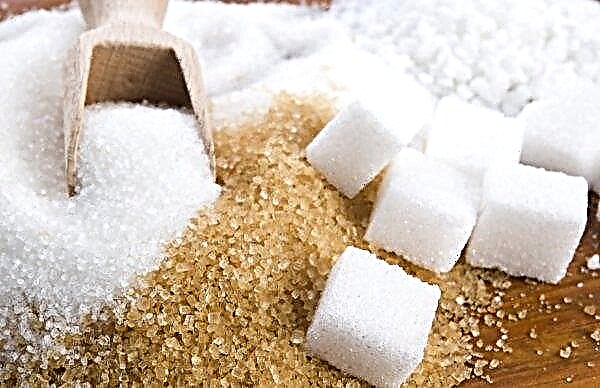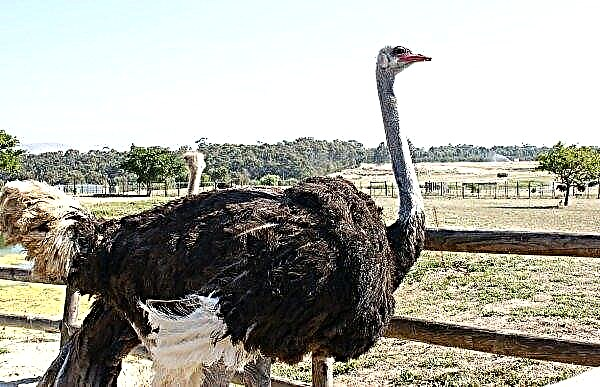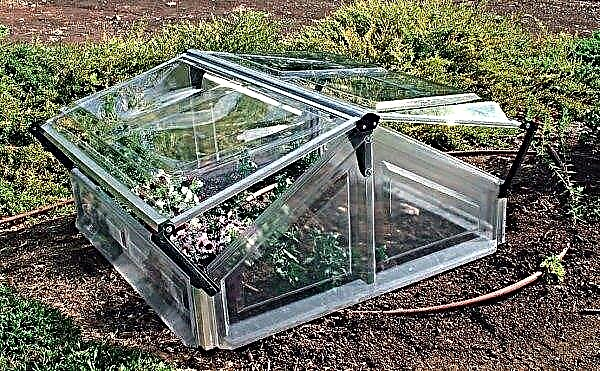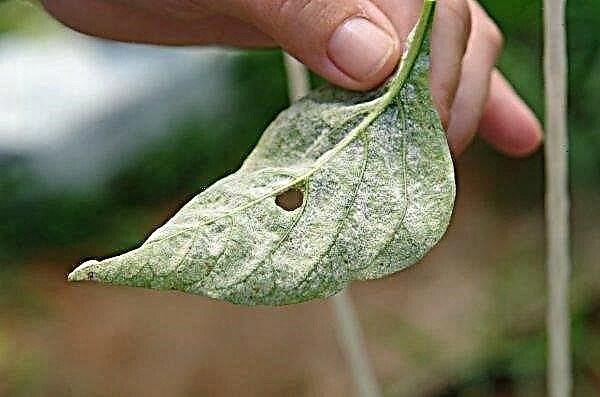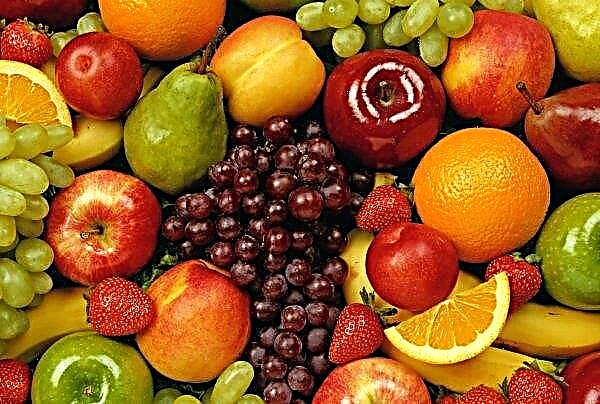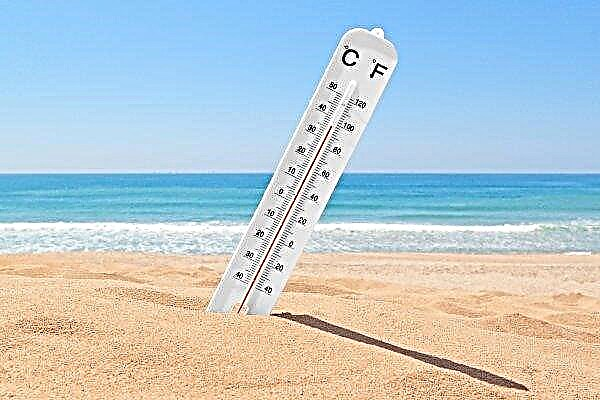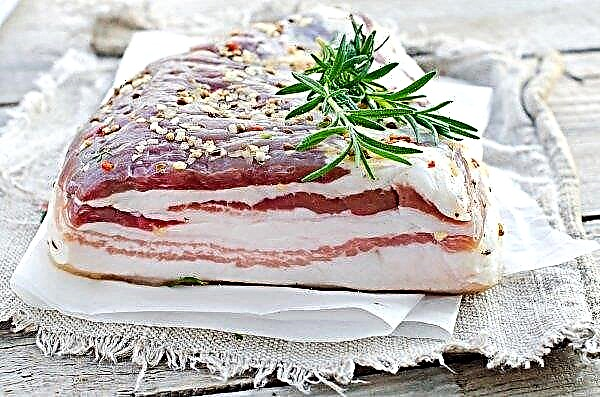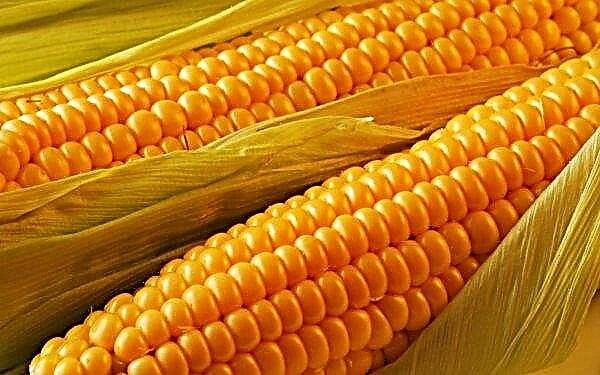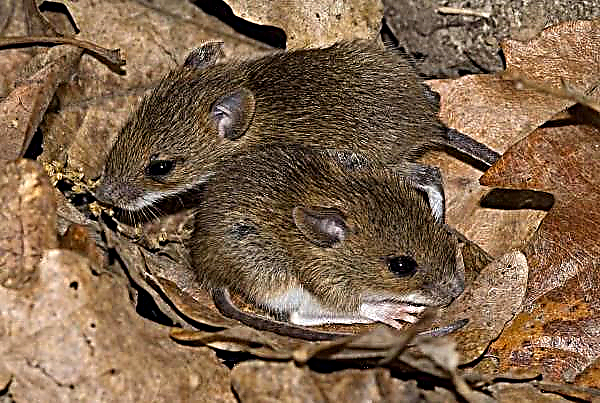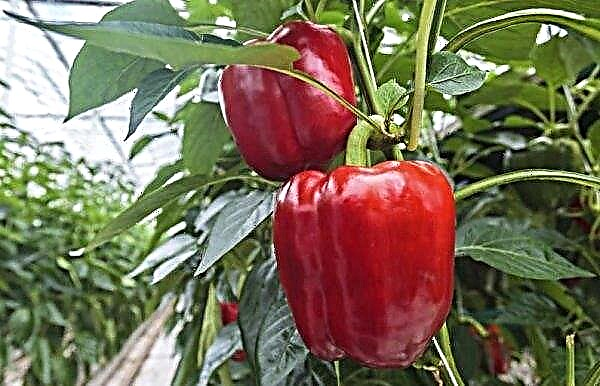Onions belong to two-year crops. It is grown in 2 stages: sowing grows from seeds, which then gives turnips and feathers. Our article provides detailed guidance on how to properly plant onions on a head and grow a good crop from it.
Important! Do not plant onions beds, fertilized with fresh manure a year ago. He needs to be given time to overreact.
Choosing a place and preparing the soil for planting
Choosing a site for onion plantings, you need to take into account the preferences of this plant:
- the place should be sunny, without a shadow;
- it should not be a lowland with a close occurrence of groundwater;
- suitable soil - chernozem or fertilized loam, dense clay soil is not suitable;
- acidity should be low or medium, if necessary, it can be lowered with lime;
- should not be planted after onions (not earlier than after 3 years);
- the best predecessors are cabbage, cucumbers, nightshade (tomatoes, potatoes).
Having chosen a suitable place, it must be prepared in advance: first in the fall, then in the spring.
Autumn preparations include:
- removal of weeds from the site;
- the introduction of organic fertilizers (compost, humus, two-year manure or ash);
- deep digging (on the bayonet of a shovel).
The spring preparatory work includes:
- Shallow loosening of the earth with a rake or digging a half-spade for a shovel;
- the introduction of mineral fertilizing a week before planting is nitroammophoska or superphosphate with potassium salts.
Did you know? Of the 900 onion species, only 228 are cultivated as edible vegetables..
What varieties can be planted
Before deciding which kind of onion to plant, it is worth familiarizing yourself with the variety of onion species. Classification of onion varieties:
- by region - southern (fruitful, sweet, but poorly stored), northern (cold-resistant, hardy, perfectly stored);
- by maturity - early (90-100 days), medium (100-120 days), late (more than 4 months);
- by the number of heads in the nest - small-nest (1-2 pcs.), Medium-nest (3-4 pcs.), Multi-nest (more than 5 pcs.);
- taste - sharp, semi-sharp, sweet.
The following are the best varieties for those who want to grow onions with large tasty turnips:
- Globo - lettuce variety of medium maturity. Belongs to the largest - turnips gain weight up to 1 kg. The bulb is round, covered with yellow husk. The pulp is very juicy and sweet.
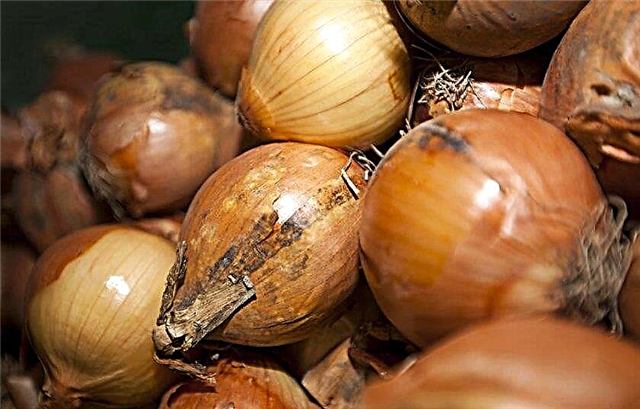
- Excisible refers to medium late varieties. Forms very large turnips (up to 800 g). The shape of the bulb is oval, the husk is thin, yellow. The pulp is juicy, pleasant sweet taste, without onion smell. It is stored for a short time, up to 4 months.
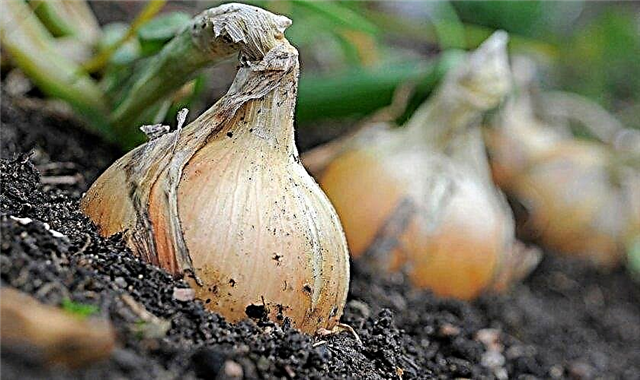
- Russian size - onion heavy weight, builds turnips weighing 600-800 g. Very tasty, juicy, does not have a pungent odor. The shelf life is short.
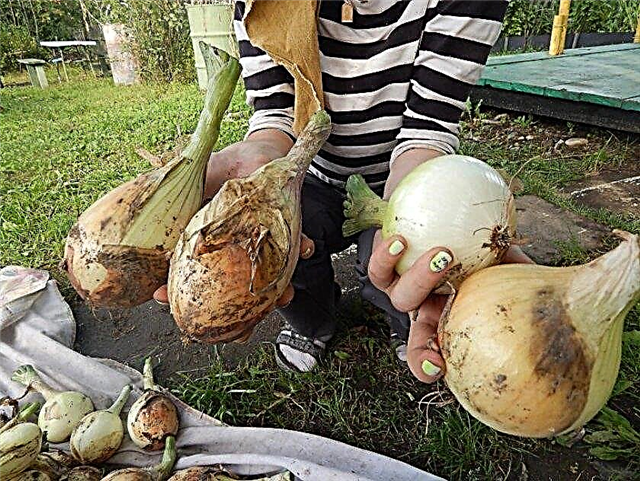
All large varieties need to be grown through seedlings: only in this case will the heads gain the necessary mass.
How to choose a favorable time
To decide when to start sowing, you need to take into account local climatic conditions, as well as the weather forecast for the coming weeks. Landing in the winter is early (in August) and late (in September - October). It is important to have time to plant sowing a month before the start of frost, so that it has time to take root. The main condition for spring planting is that the soil must have time to warm up to + 12 ° C. Although the onion can withstand cold and small frosts well, do not deepen its cold earth.
Important! It is not necessary to trim the tails of the bulbs in order to accelerate the appearance of sprouts: in this way they become defenseless against bacteria.
In this case, the set will give a lot of arrows, and the turnip quality will suffer. But if you plant it too late, in warm, but dry ground, the development of the bulb slows down - it will not have time to fill up and gain the required mass. Landing dates range from April - May. In the southern regions, you can start sowing in April. In the middle lane it is worth waiting until early May, and in Siberia - until the second half of May.
Onion seed preparation
Sevoc, which has lain in winter, needs to be sorted out, discarding low-quality specimens - dried, wet, damaged, with mold spots, with roots and green sprouts. Now you need to sort good onions by size, dividing into three groups:
- small ones - up to 1.5 cm;
- medium - 1.5–2 cm;
- large - more than 2 cm.

The timing of landing depends on the size. Small ones plant before everyone else - they don’t go in arrows. The average planted later - planted on time, they will give perfect turnips. Large ones plant later, but not on a turnip, but on a feather, as they fire arrows.
Sorted planting material must be prepared for planting:
- The sevka, stored in a cool place (cellar or basement), must be moved to a warm place and left for 2-3 weeks to warm and dry. Without this, arrows will form.
- Warm up at a temperature of + 35 ... + 40 ° C to destroy the infection, for example, by putting a box of material on the battery for 8 hours.
- Soak the bulbs for half a day in a weak solution of mineral fertilizers.
- For disinfection, they are dipped for 10-15 minutes in a solution of potassium permanganate, vitriol or “Fitosporin”. After the procedure, the seeds must be rinsed with warm water.
The technique of planting seed in open ground
As already mentioned, the time to plant onions comes when the soil warms up to + 12 ... + 14 ° С. It is advisable to adhere to the following landing pattern:
- row spacing - 20 cm;
- the distance between seeds is 6–10 cm (the larger the expected turnip, the greater the distance);
- furrow depth is about 4 cm.

Sowing technology is simple:
- Dig parallel grooves according to the specified pattern.
- Pour them with water and sprinkle with wood ash.
- Deepen the bulbs with the nose down, observing the recommended distance.
- To fill up with the earth or humus. The layer should not be thicker than 2 cm.
When planting onions, it is important to think about what it is best to plant next to it. The ideal neighbor is carrots: both cultures repel harmful insects from each other.
Care and cultivation of onion sets
In order to grow beautiful, juicy onions, it is necessary to water and fertilize it in time, to loosen and weed weeds, as well as to protect the plantings from diseases and pests.
Watering the soil
It is very important that the onion seedlings receive enough moisture, but they do not like excessive moisture. On the wrong watering will inform the appearance of onion feathers:
- the leaves are bent and lightened too much - lack of water;
- feathers acquired a saturated bright green color - waterlogging.

The frequency of watering depends on the growing season:
- the first 1.5 months - 1 time per week;
- during the formation of turnips, watering is reduced;
- at the stage of head maturation (one month before harvesting) - the termination of irrigation, only in a dry summer, sprinkling is done.
Weeding and cultivating row spacing
Loosening is an obligatory step that accompanies watering. After drying of the wet earth, a crust forms, which closes the air access to the roots and forming bulbs. To resume aeration of the soil, it needs to be loosened every time after wetting or rain. Usually, loosening is accompanied by weeding between rows. It is simply necessary to remove weed in time, as, growing up, it takes away nutrition from the onion crop. In addition, weeds often become a source of infection. Weed grass in the garden between the bulbs should be done manually, so as not to damage the delicate onion heads with a sharp tool.
It is simply necessary to remove weed in time, as, growing up, it takes away nutrition from the onion crop. In addition, weeds often become a source of infection. Weed grass in the garden between the bulbs should be done manually, so as not to damage the delicate onion heads with a sharp tool.
Fertilizer application
Onions planted in fertile soil, fed with fertilizers in autumn and spring, do not need additional fertilizing. On poor soils, it is worth feeding it 2 times:
- a month after planting, when the sprouts reach about 10 cm - organic matter, for example, a solution of mullein or bird droppings;
- when heads are formed - with mineral fertilizers, including phosphorus and potassium.
Preventive measures against pests and diseases
The main onion diseases include: cervical rot, downy mildew, black mold and rust. Pests affecting this culture. - this onion fly, onion tick and thrips. Fight these enemies with special drugs. But, as you know, the best treatment is prevention.
Preventive measures include compliance with the rules of agricultural technology:
- preplant seed and soil dressing;
- crop rotation compliance;
- regular moderate watering;
- timely loosening and weeding of weeds;
- preventive spraying.

The recipe for a folk remedy that is used for spraying:
- settled water - 5 l;
- liquid laundry soap - ½ tbsp. l .;
- copper sulfate - ½ tsp.
Important! Spray onion plantings with chemical and folk remedies can not be earlier than they grow to 15 cm.
Collection and storage rules
Harvest time depends on the region and planting time. In the southern regions, onions begin to be harvested at the end of July, and in the middle lane - in the second half of August. The yellowed feathers lying on the ground signal the cessation of growth: it means that the turnips are ripe and ready for harvesting. Dig in the vegetables carefully so as not to touch the heads. Dried onions are recommended to dry thoroughly. To do this, it must be decomposed in one layer and left to dry in the fresh air for several days, without cutting the leaves. Only after the heads dry well, the leaves are trimmed, leaving a neck of 5 cm, and the upper husk is removed. Trimmed turnips must be dried again for 14 days, then they can be cleaned into the room.
Dried onions are recommended to dry thoroughly. To do this, it must be decomposed in one layer and left to dry in the fresh air for several days, without cutting the leaves. Only after the heads dry well, the leaves are trimmed, leaving a neck of 5 cm, and the upper husk is removed. Trimmed turnips must be dried again for 14 days, then they can be cleaned into the room.
Suitable storage containers:
- wooden boxes;
- carton boxes;
- wicker baskets;
- mesh bags;
- fabric bags;
- nylon stockings.
Did you know? Beautifully woven onion braids not only decorate the kitchen, but also disinfect the air in it.
Onions will be better preserved if they are put in small containers in small quantities. A cool dark place with medium humidity can serve as storage. It can be a basement, a cellar, a place near the balcony. If you have to store vegetables in the apartment, then they are not cut, but woven together with leaves. Such onion braids hanging in the kitchen are wonderfully kept all winter. To plant sowing in the spring and grow a good crop of onions is not difficult: adhering to the rules of agricultural technology, every gardener will cope with this.




